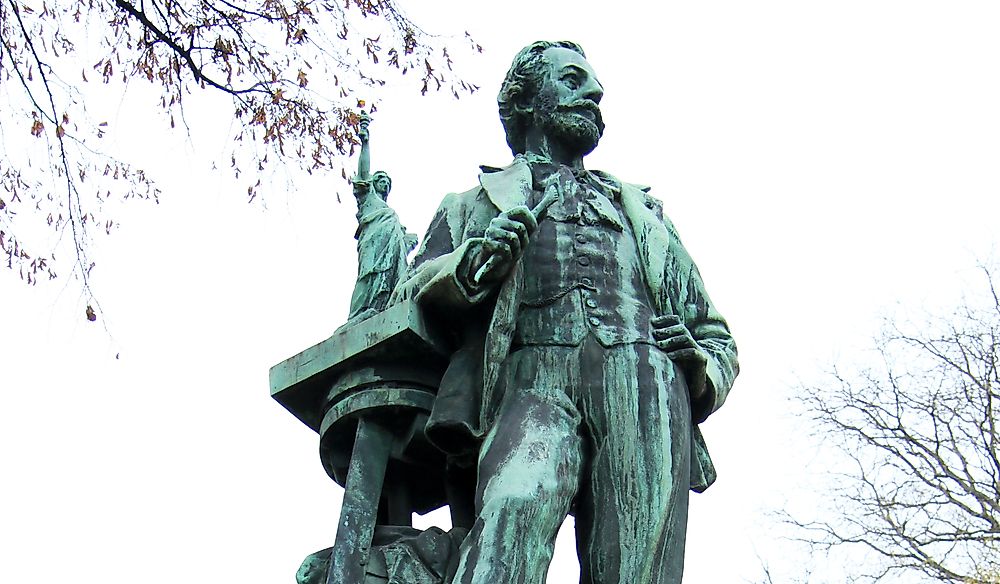Who Designed the Statue of Liberty?

The Statue of Liberty is an iconic structure located on Liberty Island, Manhattan in New York, United States. Also known as "Liberty Enlightening the World," the Statue of Liberty was a gift from France to the US to celebrate the alliance between the two countries that was formed during the American Revolutionary War. The Statue of Liberty was designed by French sculptor Frédéric Auguste Bartholdi, and the project was assisted by Alexander Gustave Eiffel, Viollet le Duc, and Joachim Gotsche Giæver. The Statue of Liberty is currently administered by the US National Park Service and became a UNESCO World Heritage Site in 1984. The statue has become a popular icon of the United States’ freedom, and the site is visited by roughly 3.2 million tourists each year.
Statue of Liberty
The statue, which is a sculpture of Libertas, a robed Roman liberty goddess, holds a torch in her right hand that is raised above her head. In her left hand, Libertas carries a tablet with the inscription "July 4, 1776" written in Roman numerals, referring to the date of the US Declaration of Independence. The height of the statue, from the ground to the top of the torch, is approximately 305 feet.
Designer: Frederic Auguste Bartholdi
Born in Colmar, France in 1834, Bartholdi's family moved to Paris when he was two years old following the death of his father. In Paris, Bartholdi studied sculpture, architecture, drawing, and painting. The capture of Alsace by Germany during the Franco-Prussian War stirred Bartholdi's desire to support France’s founding principle of Liberty, and he later served as an officer during the war. Bartholdi began work on the Statue of Liberty in 1870 and supervised its construction until the project was completed. Bartholdi also created another large sculpture, the Lion of Belfort, located in the city of Belfort, France.
Construction of the Statue of Liberty
The idea behind the Statue of Liberty is linked to to a discussion between Édouard René Lefèbvre de Laboulaye, president of the French Anti-Slavery Society, and Bartholdi in 1865, following the end of the American Civil War and the abolishment of slavery in the US. Bartholdi developed sketches of the statue and raised 400,000 Francs for the project, and later settled on its location. The statue was built in France, disassemble it into 350 pieces, packed into 214 crates, and shipped to the US, where it arrived four months later. The reassembly process in the US was overseen by Norwegian-born civil engineer Joachim Gotsche Giæver. The US was responsible for building the pedestal upon which the statue would stand, and it was designed by American architect Richard Morris Hunt. The statue was dedicated on October 28, 1886.











